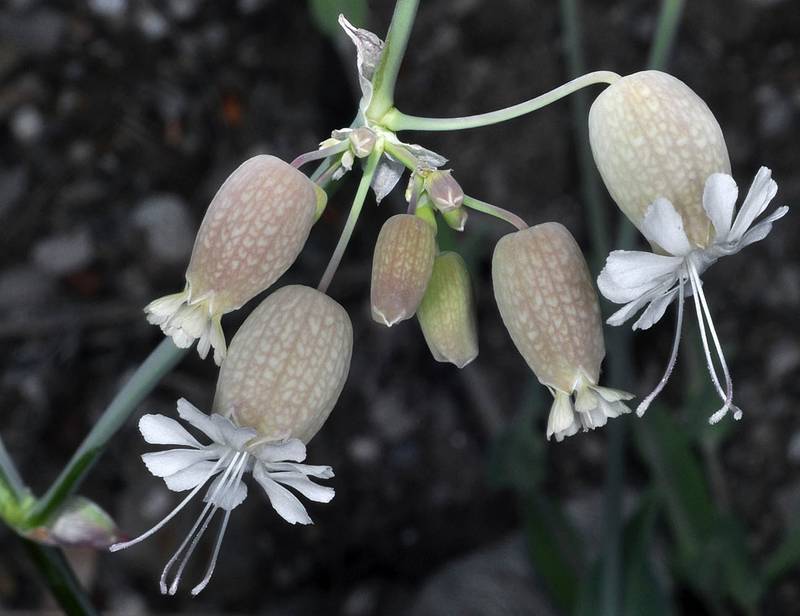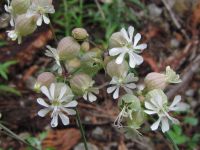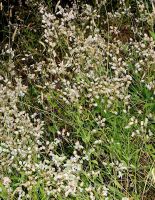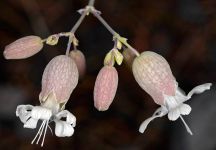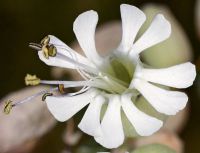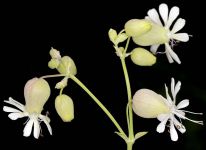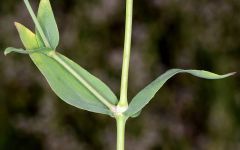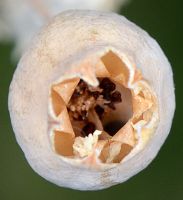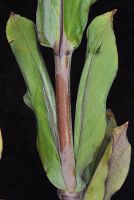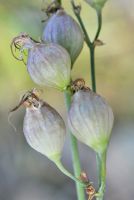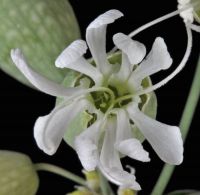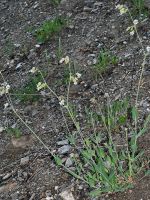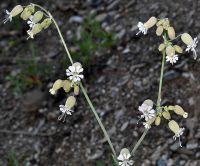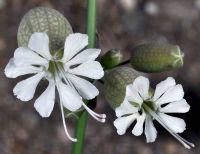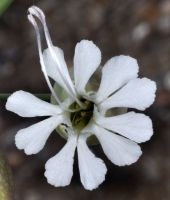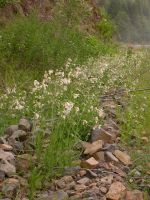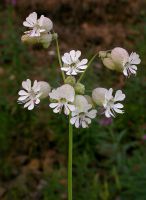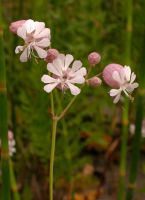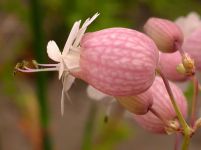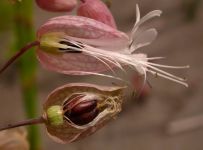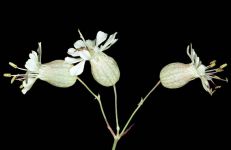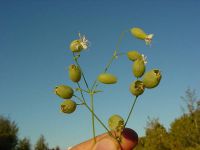Distribution: Occurring chiefly west of the Cascades crest and in the Columbia River Gorge in Washington; Alaska to California, east across most of North America to the Atlantic Coast.
Habitat: Fields, roadsides, wastelots, and other disturbed areas at low elevations.
Flowers: June-August
Origin: Introduced from Europe
Growth Duration: Perennial
Conservation Status: Not of concern
Pollination: Self-pollination, moths, hummingbirds
Usually glabrous perennial from a strong taproot, the stems up to 1 m. tall, but the lower branches often decumbent.
Leaves opposite, ovate-lanceolate to oblanceolate, 3-8 cm. long and 1-3 cm. broad.
Flowers several to many in an open, rather flat-topped inflorescence, with narrow, inconspicuous bracts; calyx 5-lobed, bell-shaped, 1 cm. long at blooming, but inflated and up to 2 cm. long in fruit, pale green to purplish, glabrous; petals 5, white, the claw about 1 cm. long, expanded above, the blade 4-6 mm. long, deeply bi-lobed; appendages at the base of the blade 2 and minute, or lacking; ovary stalk 2-3 mm. long; stamens 10; styles usually 3.
Capsule 3-celled.
Publication: Fl. N. Mitt.-Deutschland, ed. 9. 46. 1869.
Silene inflata Sm.
Silene latifolia Rendle & Britten var. pubescens (DC.) Farw.
PNW Herbaria: Specimen records of Silene vulgaris in the Consortium of Pacific Northwest Herbaria database.
WA Flora Checklist: Silene vulgaris checklist entry.
OregonFlora: Silene vulgaris information.
E-Flora BC: Silene vulgaris atlas page.
CalPhotos: Silene vulgaris photos.
USDA Plants: Silene vulgaris information.


